In this week's NewsFlash, we find out how a giant parachute could help avoid satellite collisions, why the schizophrenic brain can't see a popular optical illusion and we discover that all octopodes (or octopuses?) are poisonous! Plus, we hear about bicycle day and the story of LSD, and Sarah Castor-Perry takes us back to the launch of the Hubble space telescope, this week in science history...
In this episode
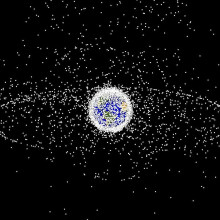
Parachutes for rockets
After the recent collision between an american satellite phone satellite and a defunct russian satellite the problem of space junk has become more obvious. One major source of space junk is spent upper rocket stages which are lifted high enough to reach orbit.
These rocket stages are particularly dangerous to satellites as they often still contain fuel and if this vents they can change direction unpredictably or even explode.
In a low earth orbit there are faint wisps of an atmosphere and this will eventually slow down the debris and cause it to deorbit, but this will take at least 100 years could take thousands.
Max Cerf and Brice Santerre at the European aerospace firm EADS Astrium may have a solution. This involves attaching a super-light sail arrangement onto the rocket which deploys once the rocket has released its satellite. This would be supported by an inflatable structure probably impregnated with epoxy so that it would become solid and last a long time. For an Ariane 5 rocket it would have to be about 350 square metres.
This sail or aerobrake would then increase the air resistance enough to cause the rocket to come back to earth in only a couple of decades, hugely reducing the buildup of space junk in low earth orbit.
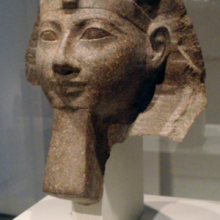
Ancient pharaohs sipped medicinal tipple
Swigging back an aspirin dissolved in a glass of wine may not be a common way of taking medicines these days, but that was what the ancient Egyptians were up to at least 5000 years ago.
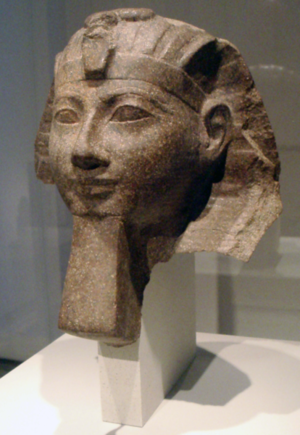 A team of archaeologists have discovered traces of medicinal plants in ancient wine jars buried in the tomb of one of Egypt's first pharaohs, Scorpion I. This provides the first physical evidence that the ancient Egyptians prescribed themselves plants steeped in wine as herbal remedies.
A team of archaeologists have discovered traces of medicinal plants in ancient wine jars buried in the tomb of one of Egypt's first pharaohs, Scorpion I. This provides the first physical evidence that the ancient Egyptians prescribed themselves plants steeped in wine as herbal remedies.
In the study, published in the journal PNAS, Patrick McGovern from the University of Pennsylvania in Philadelphia in the US and his team analysed residues left behind in ancient pottery wine jars excavated from a tomb in Abydos in upper Egypt, and found the chemical signature of tartaric acid, a good indicator that they once contained wine. They also isolated the chemical traces from several active compounds found in plants.
Plants contain all sorts of chemicals with powerful medical properties and they are the oldest form of natural medication that people have used all around the world for thousands of years. There are even other animals, including chimpanzees and starlings, that have learnt to use plants to treat various ailments.
Ancient Egyptian papyrus dating back to 1850 BC hint at the use of medicinal tipples, and this new discovery confirms the Egyptians had figured out the medicinal properties of various plants and that dissolving them in alcohol was a good way of administrating them. And it pushes back that date to at least 5000 years ago.
Now McGovern and his team are refining their analysis of the medicinal wine residues and hope to pinpoint which blend of herbs were used. They then plan to put them to the test and find out whether the Egyptians had struck on a combination of plants that could help treat diseases of the twenty-first century.
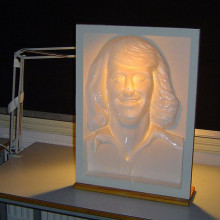
Schizophrenics don't fall for illusions
Normal human subjects are readily fooled by a 3D representation of a face mask, but schizophrenics are not.
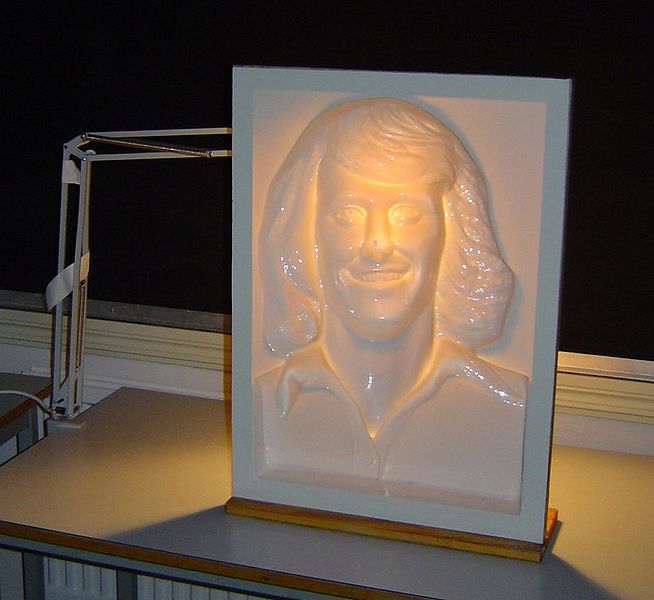 This visual trick is known as the hollow mask illusion and consists of a 3D representation of a hollow, concave mask of a face, viewed pointing inwards. When healthy individuals look at this, more than 99% of the time what they report seeing is a normal face that is convex. This illusion exploits the brain's system for making sense of the visual world by superimposing what it expects to see, based on past experience and memories, with what it is actually seeing. Yet patients diagnosed with schizophrenia almost never fall for it and instead report seeing a "hollow" face.
This visual trick is known as the hollow mask illusion and consists of a 3D representation of a hollow, concave mask of a face, viewed pointing inwards. When healthy individuals look at this, more than 99% of the time what they report seeing is a normal face that is convex. This illusion exploits the brain's system for making sense of the visual world by superimposing what it expects to see, based on past experience and memories, with what it is actually seeing. Yet patients diagnosed with schizophrenia almost never fall for it and instead report seeing a "hollow" face.
But why? To find out a joint UK and German study published in the journal Neuroimage brain scanned 16 healthy volunteers and 13 schizophrenics as they experienced the illusion, which was presented to them using a 3D headset. Hannover Medical School researcher Danai Dima, together with UCL scientist Jonathan Roiser, then compared the brain scans and found that, in the healthy controls, a region of the brain called the parietal cortex increased its connectivity to the brain's primary visual areas when the image was being presented. In the schizophrenic patients, however, this activity boost did not occur.
What this shows, the researchers explain, is that in schizophrenics there is a connectivity problem whereby they struggle to unite the contributions of different brains regions and therefore experience stimuli as their raw components. Whilst this makes them immune to visual illusions it also means that they cannot, for instance, tell internally generated stimuli, such as a voice in their head, from stimuli originating from outside the body, such as someone else's voice.
Intriguingly, it's not just schizophrenia sufferers who cannot experience this illusion. Smoking cannabis also prevents people from seeing it, suggesting one action of this drug might be to provoke a stage of dysconnectivity between different brain regions, perhaps explaining the observed link between cannabis use and an increased risk of developing psychosis.

Toxic octopodes?
Octopuses hit the science headlines this week, with the news that, contrary to popular belief, all species of these soft-bodied, eight-armed denizens of the deep are in fact venomous, solving the enduring maritime mystery of how octopuses kill their prey.
 The same goes for the octopus's cousins the cuttlefish and some squid too.
The same goes for the octopus's cousins the cuttlefish and some squid too.
But they are all harmless to people, except for the stunning but lethal blue-ringed octopus, a tiny creature at around 15cm, which lurks in tropical coral reefs.
In a study published in the Journal of Molecular Evolution, Byron Fry and from the University of Melbourne in Australia led a team of scientists on octopus collecting expeditions to Australia's Great Barrier Reef, and the waters of Hong Kong and Antarctica.
As well as finding venom proteins in many different species of cephalopod (a class of molluscs that includes octopus, cuttlefish and squid) the team also pinpointed the genes that code for these proteins and discovered that among all the various species, the venom gene was inherited from a single common ancestor.
It turns out that octopus venom is very similar to proteins in other animals like snakes. All these different animals evolved independently but came up with a similar way of creating a toxic molecule. This new octopus discovery sheds light on what makes certain molecules venomous and should pave the way for the development of new drugs for treating pain, allergies and cancers.
And it means that we finally know how octopuses kill their prey: They grab a tough-shelled crab with their suckered tentacles, pierce its shell with their sharp beak then use their venom to kill their victim.
But it leaves us with the eternal conundrum: What is the plural of octopus? Is it octopuses? Octopi? Octopodes? Or perhaps octopussies?
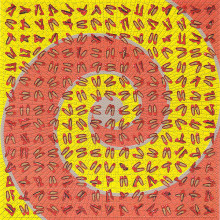
14:23 - Bicycle Day - The Discovery of LSD
Bicycle Day - The Discovery of LSD
Professor Philip Strange, Reading University
Chris - 66 years ago the famous Bicycle Day occurred. Bicycle Day was when Dr Albert Hofmann, who was a researcher in Basel was working on something which has subsequently spawned an entire revolution. The psychedelic revolution. He took a famous trip home on his bicycle home from work after inventing what subsequently became known as LSD - Lysergic acid diethylamide. He was doing it by studying a fungus that grows on wheat. His discovery was entirely accidental. To tell us a little bit about it is Professor Philip Strange, who's the Director of Pharmacology at the University of Reading. Hello Philip. Tell us a bit about this momentous anniversary that we're celebrating today, in effect this week.
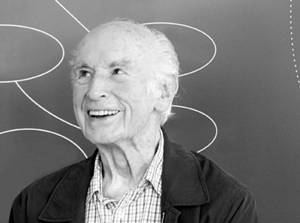 Philip - Hofmann, as you said, was an organic chemist working in Sandoz in Basel in the 1940s. He was working on the chemical derived from the fungus ergot. One of the chemicals he made, based on the ergot, was LSD. On April the 16th, 1943 he was working on LSD and he experienced the funny effects including hallucinations after working with the chemical. He went home for the weekend and on the 19th of April - 66 years ago today - he came to verify these effects of the drug. He took a quarter of a milligram of the drug and experienced the same psychedelic effects again only much more strongly. It was actually a very large dose to take as we now know. He felt very odd that day, experienced these psychedelic effects and decided to go home. This was war time; there were no cars so he used his bike. The crazy bicycle ride home through the streets of Basel under the influence of LSD was the first demonstration of the powerful psychedelic effects of the drug. It's termed bicycle day in the psychedelic counter-culture.
Philip - Hofmann, as you said, was an organic chemist working in Sandoz in Basel in the 1940s. He was working on the chemical derived from the fungus ergot. One of the chemicals he made, based on the ergot, was LSD. On April the 16th, 1943 he was working on LSD and he experienced the funny effects including hallucinations after working with the chemical. He went home for the weekend and on the 19th of April - 66 years ago today - he came to verify these effects of the drug. He took a quarter of a milligram of the drug and experienced the same psychedelic effects again only much more strongly. It was actually a very large dose to take as we now know. He felt very odd that day, experienced these psychedelic effects and decided to go home. This was war time; there were no cars so he used his bike. The crazy bicycle ride home through the streets of Basel under the influence of LSD was the first demonstration of the powerful psychedelic effects of the drug. It's termed bicycle day in the psychedelic counter-culture.
Chris - Although it obviously didn't harm him too much because he died last year at the age of 102. What was he actually trying to achieve? Obviously not to make an hallucinogen. He was working on these agents for some reason, presumably not with that reason in mind though.
 Philip - The LSD was just an accident, really. The Sandoz were interested in the business of making new drugs. They wanted to look at different sources. They chose a natural product - this ergot which grows on wheat and also on rye as well. It contains all sorts of interesting chemicals. For example, preparations of ergot have been used for years to quicken labour and the Sandoz isolated the actual compound: ergometrine from that. It's still used to stop haemorrhaging after childbirth.
Philip - The LSD was just an accident, really. The Sandoz were interested in the business of making new drugs. They wanted to look at different sources. They chose a natural product - this ergot which grows on wheat and also on rye as well. It contains all sorts of interesting chemicals. For example, preparations of ergot have been used for years to quicken labour and the Sandoz isolated the actual compound: ergometrine from that. It's still used to stop haemorrhaging after childbirth.
Chris - Because it constricts arteries, doesn't it? Doesn't the same drug also prove useful in the treatment of migraines by preventing the blood vessels in the brain from dilating?
Philip - That's ergotamine. It's similar but it's a different compound. It works very similarly to the tryptan which everybody has taken over in the treatment of migraines.
Chris - Do we know how LSD actually does what it does?
Philip - We don't know clearly. What LSD does is it hijacks some of the receptors in the brain for one of the chemicals called serotonin. Serotonin is a neurotransmitter - a brain chemical which is very important for transmitting messages in our brain. It's involved in all sorts of different things like emotion and constricting arteries as you've said. It acts by binding to proteins called receptors. LSD basically binds to those receptors and hijacks and affects it. It's not surprising it has these complex effects.
Chris - Why is it that some people experience bad outcomes from taking this though? Even Hofmann himself said that you can sometimes get bad trips where rather than seeing nice things you see nasty things.
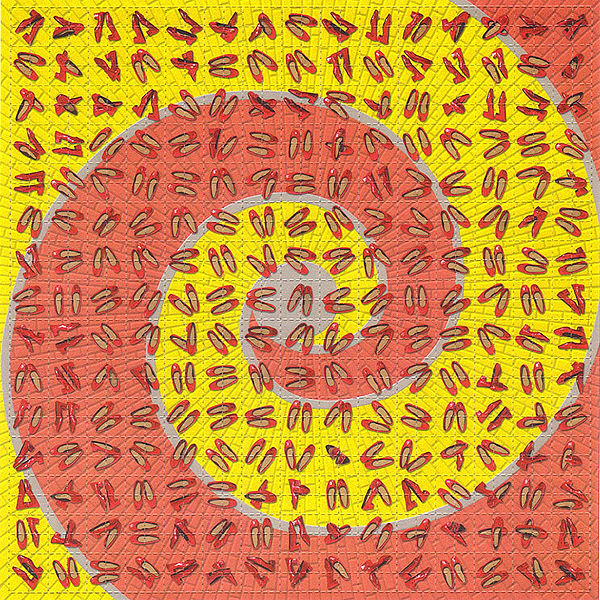 Philip - I don't know the answer to that question, really. One thing is if people take too much. It was espoused by the hippy culture and if they used it in a very uncontrolled manner there that's one reason. Other reasons are that people are all different in the way they react to these things - different drugs and so on. Also the preparations of the drug that people are being given are not pure.
Philip - I don't know the answer to that question, really. One thing is if people take too much. It was espoused by the hippy culture and if they used it in a very uncontrolled manner there that's one reason. Other reasons are that people are all different in the way they react to these things - different drugs and so on. Also the preparations of the drug that people are being given are not pure.
Chris - Just to finish off, I think this does tell us quite a bit about how we go about finding drugs. Helen was saying that, if you look at an octopus there may be genes which it uses to make toxins and those toxins that kill things could also prove therapeutically useful. I think the science that Sandoz was doing that accidentally led to the generation of LSD, in itself was a sound way to discover drugs.
Philip - It is and it's still used by some companies nowadays. Particularly the deep sea organisms contain new structures on which you can base new drugs.
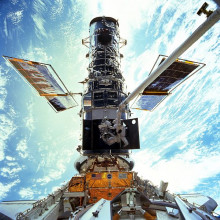
19:41 - This Week in Science History - The Launch of the Hubble Space Telescope
This Week in Science History - The Launch of the Hubble Space Telescope
Sarah Castor-Perry
This week in science history saw, in 1990, the launch of the Hubble Space Telescope, the largest and most advanced extraterrestrial telescope that has allowed us an extraordinary insight into the furthest reaches of the universe and has also helped to determine the speed at which the universe is expanding.
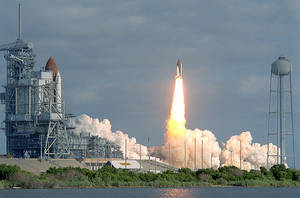 This year we're celebrating the 400th anniversary of Galileo Galilei's groundbreaking observations using one of the very first telescopes. The Hubble telescope is, unsurprisingly, pretty different to Galileo's, which would have used glass lenses. In order to see dimmer objects, the objective (main light-capturing) lens needs to be bigger. The only problem with this is that as the glass lenses get bigger in diameter, because they can only be held around the edges in order for the light to pass through them, they tend to sag in the middle, distorting the image. The solution to this has been to use mirrors, which could be supported from behind, to capture the images - a system first developed by Newton in the 18th century. Hubble's primary mirror is over 2 metres in diameter.
This year we're celebrating the 400th anniversary of Galileo Galilei's groundbreaking observations using one of the very first telescopes. The Hubble telescope is, unsurprisingly, pretty different to Galileo's, which would have used glass lenses. In order to see dimmer objects, the objective (main light-capturing) lens needs to be bigger. The only problem with this is that as the glass lenses get bigger in diameter, because they can only be held around the edges in order for the light to pass through them, they tend to sag in the middle, distorting the image. The solution to this has been to use mirrors, which could be supported from behind, to capture the images - a system first developed by Newton in the 18th century. Hubble's primary mirror is over 2 metres in diameter.
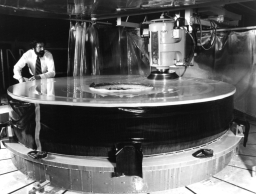 The telescope was funded as a collaboration between NASA and the European Space Agency and was originally planned to be launched in 1983. However, several problems, including the Challenger disaster, in January 1986, where a NASA shuttle broke up on take off, delayed the launch. It was eventually launched on the shuttle Discovery in April 1990.
The telescope was funded as a collaboration between NASA and the European Space Agency and was originally planned to be launched in 1983. However, several problems, including the Challenger disaster, in January 1986, where a NASA shuttle broke up on take off, delayed the launch. It was eventually launched on the shuttle Discovery in April 1990.
But even once it was up in orbit, it was beset with problems. Scientists realised that the primary mirror used to capture the images had not been ground properly, and so in 1993 a servicing mission (SM1) was sent to rectify it by installing corrective optics. In 1994 NASA announced that the mission had been a success and released newly taken images showing much higher resolution.
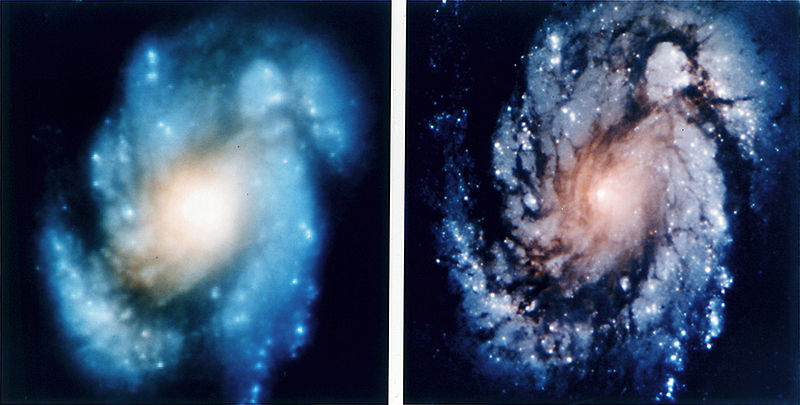 |
| Images of the spiral galaxy M100 demonstrate the improvement in Hubble images after corrective optics were installed during Servicing Mission 1 in 1993. © NASA |
The telescope has been a part of some of the most important astronomical work of the 20th Century, including being used to calculate the Hubble Constant, named just like the telescope after the American astronomer Edwin Hubble. He proposed what came to be known as Hubble's Law, which suggested that the universe was expanding, and is still some of the main support for the big bang. The measurements taken by the Hubble telescope allowed scientists to estimate the rate of expansion much more accurately.
The data collected by the telescope also supported the theory that most galaxies (including our own galaxy, the Milky Way) have a black hole at their centre, an idea first suggested in the 60s. It hasn't proven the theory, but the sort of radiation being emitted from these areas of space is consistent with the presence of what we currently understand as a black hole.
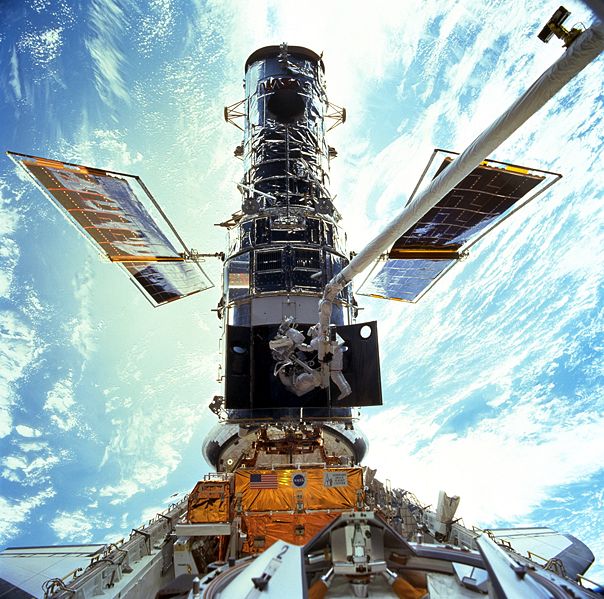 One of the most exciting pieces of information gathered by the Hubble telescope is the collection of Ultra Deep Field images. These may not look much at first - a picture showing lots of slightly different shaped coloured points of light, but these are some of the furthest away galaxies in the universe that emit visible light. They are approximately 13 billion light years away, meaning that the light that is now reaching us from them was emitted 13 billion years ago - only a few hundred million years after the Big Bang. The ultra deep field images give us a glimpse of what the young universe was like.
One of the most exciting pieces of information gathered by the Hubble telescope is the collection of Ultra Deep Field images. These may not look much at first - a picture showing lots of slightly different shaped coloured points of light, but these are some of the furthest away galaxies in the universe that emit visible light. They are approximately 13 billion light years away, meaning that the light that is now reaching us from them was emitted 13 billion years ago - only a few hundred million years after the Big Bang. The ultra deep field images give us a glimpse of what the young universe was like.
As well as all these, the images taken by the telescope of Galaxies like our closest neighbour Andromeda and of nebulae like the Eagle Nebula were like nothing the public had ever seen before and really gave people the chance to see a new side to the universe.
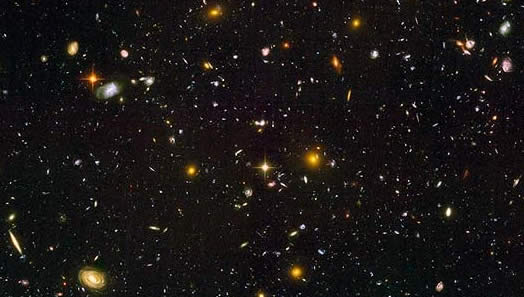 As for the future for the telescope, another servicing mission is planned for May 2009, and after this the telescope could continue to operate up to 2021. In 2013, the James Webb Space Telescope is due to be launched. This will be a much more advanced telescope, but will only observe in the infrared end of the spectrum, which means it would not replace Hubble (which observes in visible and ultraviolet) but work alongside it to further astronomical research. The Hubble Space Telescope is probably the best known telescope of its kind around the world, and as well as proving invaluable to the world of astronomy, it has provided beautiful and extraordinary images of our universe that inspire and enthral the public.
As for the future for the telescope, another servicing mission is planned for May 2009, and after this the telescope could continue to operate up to 2021. In 2013, the James Webb Space Telescope is due to be launched. This will be a much more advanced telescope, but will only observe in the infrared end of the spectrum, which means it would not replace Hubble (which observes in visible and ultraviolet) but work alongside it to further astronomical research. The Hubble Space Telescope is probably the best known telescope of its kind around the world, and as well as proving invaluable to the world of astronomy, it has provided beautiful and extraordinary images of our universe that inspire and enthral the public.
Related Content
- Previous How do Fish Sleep?
- Next Questions and Answers










Comments
Add a comment